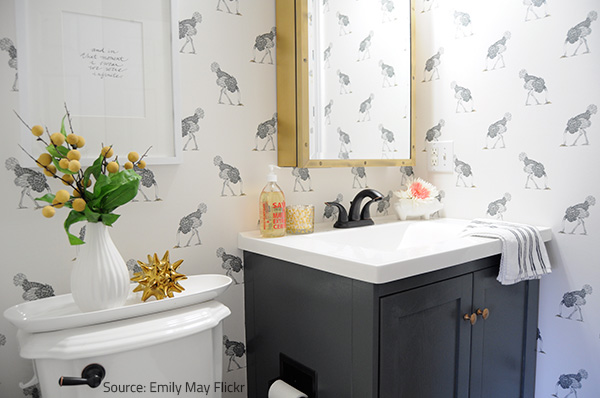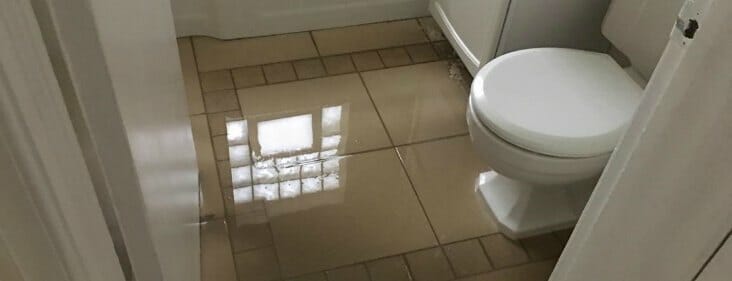Water Damage in Bathrooms
Water Damage in Bathrooms
Blog Article
Here in the next paragraph you will discover a good deal of good help and advice pertaining to How to Repair and Prevent Bathroom Water Damage?.

Water damage frequently takes place in the restroom as a result of the water used daily. Occasionally, the damages could be a little mold and mildew from the shower. Various other times, it's enormous damages on your floor. Whatever it is, it is always excellent to know the cause and also prevent it before it takes place.
This guide will experience several of the common root causes of water damage in the bathroom. We will likewise analyze what you can do to prevent these causes from harming your washroom. Let's dive in.
These are the typical factors you would certainly have water damage in your bathrooms as well as exactly how you can detect them:
Excess Moisture
It's amazing to have that lengthy shower and also splash water while you dance around as well as imitate you're executing, but in some cases these acts might trigger water damage to your washroom.
Splashing water around can cause water to visit corners as well as create mold and mildews. See how you spread out excess wetness around, as well as when you do it, clean it up to avoid damages.
Splits in your wall surface floor tiles
Shower room wall surface floor tiles have actually been particularly made for that purpose. They secure the wall from wetness from people taking showers. Nevertheless, they are not undestroyable.
Often, your restroom wall ceramic tiles fracture as well as enable some dampness to permeate right into the wall surface. This can possibly damage the wall surface if you do not take any kind of activity. If you see a crack on your wall surface ceramic tiles, repair it promptly. Do not wait up until it ruins your wall.
Overflowing bathrooms and sinks
As humans, sometimes we make mistakes that can create some water damage in the washroom. As an example, leaving your sink faucet on might trigger overflowing and damages to various other parts of the shower room with wetness.
Also, a faulty toilet can create overflowing. For example, a busted bathroom deal with or various other parts of the tank. When this happens, it can harm the floor.
As soon as you see an overruning sink or toilet, call a plumber to aid take care of it instantly.
Ruptured or Leaking Pipes
There are lots of pipes lugging water to different parts of your washroom. Some pipes take water to the toilet, the sink, the faucets, the shower, and many various other places. They crisscross the tiny area of the bathroom.
Once in a while, these pipelines could obtain rusty and also burst. Other times, human activity might create them to leak. When this happens, you'll discover water in the corners of your bathroom or on the wall surface.
To spot this, watch out for bubbling wall surfaces, molds, or mold. Call an expert emergency situation plumbing technician to repair this when it occurs.
Roof covering Leaks
Occasionally, the issue of water damage to the washroom might not originate from the bathroom. As an example, a roof covering leak can trigger damages to the restroom ceiling. You can identify the damage done by looking at the water spots on the ceiling.
If you find water spots on your ceiling, examine the roofing system to see if it's damaged. Then, call a specialist to assist address the issue.
Verdict
Water damage to your shower room can be bothersome. However, you can handle it if you protect against some of the reasons stated in this guide. Call a professional emergency plumbing if you observe any serious damages.
How to Prevent Water Damage in Your Bathroom?
Water damage repair is an expensive, meticulous, and lengthy process. Unfortunately, bathrooms are the most susceptible rooms to water damage due to toilets, showers, and sinks. Pipes and fixtures wear out over time and are not immune to damage. But all is not lost, as there are ways to prevent water damage from occurring in your bathroom.
Check Your Plumbing
Nothing lasts forever, especially pipes, which can rust and begin leaking over time. You should periodically conduct pipe inspections and pay attention for any musty smells or water stains that may indicate you need water damage repair. Here are some things to check:
Frequently test valves for your toilet, shower, and sink to ensure they are properly working. Check faucet supply lines hidden under vanities and replace when needed. Replace cracked or deteriorating caulking along sinks, tubs, and showers. If you notice a clog in your sink, call in a professional. Since you can’t check the pipes in the wall, keep an eye out for stains, drywall bubbling, musty smells, and excess moisture; if the bathroom is on a second level, check the ceiling of the room directly below for these signs. Don’t Overwork Your Toilet
One of the most common reasons bathrooms need water damage repair is due to overflowing toilets. Save yourself the hassle of cleanup by being mindful and not pushing your toilet to extreme limits. If you have young children, it is especially important to keep an eye on them when they are in the bathroom and to teach them how to avoid clogging the toilet. Here are some more tips to help prevent your toilet from overflowing:
If you have a septic tank, only use septic-safe toilet paper Do not flush anything down the toilet besides toilet paper; items like diapers and sanitary napkins will clog the piping Pay attention to your toilet’s water level: If it’s low, it could mean it is partially clogged or that there is a crack in the toilet bowl https://www.alure.com/home-improvements-blog/resources/how-to-prevent-water-damage-in-your-bathroom

I came across that post on How to Repair and Prevent Bathroom Water Damage? while doing a lookup on the search engines. Sharing is caring. Helping people is fun. Thanks a lot for your time invested reading it.
Explore Report this page